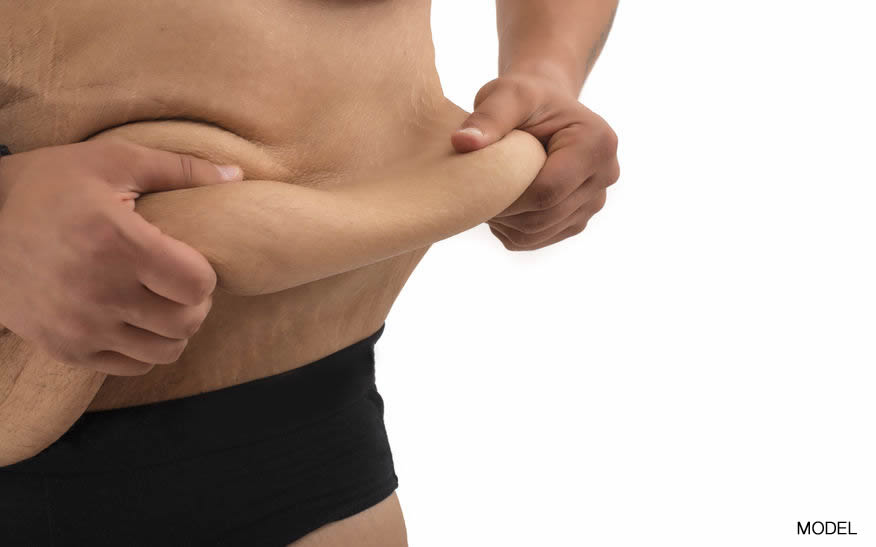Introduction
Are you looking to achieve a toned and well-defined abdomen? If so, you’ve come to the right place. In this comprehensive guide, we will walk you through everything you need to know about tummy tucks. From understanding the procedure and its benefits to exploring the recovery process and potential costs, we aim to provide you with all the information you need to make an informed decision. So, let’s dive into “Your Guide to Tummy Tuck” and discover how you can achieve the abdomen of your dreams.
Your Guide to Tummy Tuck
Understanding the Tummy Tuck Procedure
What exactly does a tummy tuck do? A tummy tuck, also known as abdominoplasty, is a surgical procedure designed to remove excess skin and fat from the abdominal area. Additionally, it involves tightening the underlying muscles for a more toned and defined abdomen. The procedure helps to eliminate stubborn belly fat, improve abdominal contour, and restore core strength.
Types of Tummy Tuck Procedures
What are the different types of tummy tuck procedures? There are various types of tummy tuck procedures tailored to address specific concerns:
- Full Tummy Tuck: This procedure involves an incision from hip to hip, along with an incision around the navel. It addresses both the upper and lower abdominal areas for comprehensive reshaping.
- Mini Tummy Tuck: The mini tummy tuck focuses on the lower abdomen only. It is suitable for individuals with mild to moderate abdominal concerns and involves a shorter incision.
- Extended Tummy Tuck: An extended tummy tuck is recommended for individuals with excess skin and fat extending beyond the abdominal area. It involves a longer incision to facilitate more significant tissue removal.
- Circumferential Tummy Tuck: Also known as a body lift, a circumferential tummy tuck targets the entire torso. It is often performed on individuals who have experienced significant weight loss and addresses not only the abdominal area but also the hips, lower back, and buttocks.
Candidates for Tummy Tuck Surgery
Who is an ideal candidate for a tummy tuck? Ideal candidates for a tummy tuck generally:
- Have excess abdominal skin that is resistant to exercise and diet.
- Have weakened or separated abdominal muscles.
- Are in overall good health, both physically and mentally.
- Have realistic expectations about the outcome of the surgery.
To determine if you are a suitable candidate, it’s crucial to consult with a board-certified plastic surgeon who will evaluate your specific case and discuss your goals and expectations.
The Tummy Tuck Procedure Step-by-Step
- Initial Consultation: During your initial consultation with Dr. Faisal Ameer, a board-certified consultant plastic surgeon, you will discuss your goals, medical history, and any concerns you may have. Dr. Ameer will evaluate your abdominal area and provide personalized recommendations for the most suitable tummy tuck technique for you.
- Preparing for Surgery: If you decide to proceed with the surgery, Dr. Ameer will provide you with preoperative instructions. These may include dietary guidelines, medication adjustments, and quitting smoking if applicable. Following these instructions will help ensure a smooth surgical experience.
- Anesthesia: On the day of the procedure, you will be placed under general anesthesia or intravenous sedation, ensuring your comfort throughout the surgery.
- Incision: Dr. Ameer will carefully create an incision, usually low on the abdomen, where it can be easily concealed by underwear or swimwear.
- Removal of Excess Skin and Fat: Through the incision, Dr. Ameer will remove the excess skin and fat from the abdominal area. Liposuction may also be used to enhance the contouring process.
- Muscle Repair: If needed, Dr. Ameer will repair and tighten the weakened or separated abdominal muscles to restore a firmer abdominal wall and improve core strength.
- Skin Repositioning: The remaining skin is repositioned and sutured, resulting in a smoother and more toned appearance.
- Closing the Incisions: The incisions are closed with sutures, and a sterile dressing is applied to protect the surgical area.
Recovery and Aftercare
After the tummy tuck surgery, following proper postoperative care is crucial for a smooth recovery. Dr. Ameer and his team will provide you with specific instructions tailored to your individual needs. Here are some general guidelines to keep in mind:
- Rest and Recovery: Plan to take at least one to two weeks off work or regular activities to allow your body to heal properly.
- Pain Management: Dr. Ameer will prescribe pain medication to help manage any discomfort during the initial stages of recovery.
- Compression Garments: Wearing a compression garment can aid in reducing swelling and provide support to the treated area.
- Physical Activity: Initially, it is essential to avoid strenuous activities and heavy lifting. Dr. Ameer will provide guidance on when you can gradually resume exercise.
- Follow-up Appointments: Attend all scheduled follow-up appointments with Dr. Ameer to ensure proper healing and address any concerns.
Potential Risks and Complications
As with any surgical procedure, tummy tucks carry certain risks and complications. While the vast majority of tummy tuck surgeries are successful, it’s important to be aware of potential issues, including:
- Infection: Proper wound care and following postoperative instructions can help minimize the risk of infection.
- Bleeding: While uncommon, excessive bleeding can occur during or after the surgery. Dr. Ameer and his team will monitor your progress closely to identify and address any bleeding.
- Scarring: Tummy tuck surgery involves incisions, which will result in scars. However, Dr. Ameer employs advanced techniques to make incisions in areas that can be concealed by clothing and swimwear. Over time, the scars will fade and become less noticeable.
- Poor Wound Healing: Certain factors, such as smoking or underlying medical conditions, can impair wound healing. It’s important to follow Dr. Ameer’s preoperative and postoperative instructions to optimize healing.
- Fluid Accumulation: Fluid buildup under the skin may occur after surgery. Dr. Ameer may use drains to prevent this, and they will be removed during a follow-up appointment.
Remember, by choosing an experienced and qualified plastic surgeon like Dr. Faisal Ameer, you can significantly reduce the risk of complications and ensure a successful outcome.
FAQs (Frequently Asked Questions)
FAQ 1: What exactly does a tummy tuck do? A tummy tuck, or abdominoplasty, is a surgical procedure that removes excess skin and fat from the abdominal area while tightening the underlying muscles. It helps achieve a more toned and defined abdomen.
FAQ 2: How long does a tummy tuck last? The results of a tummy tuck are long-lasting, provided that you maintain a stable weight and lead a healthy lifestyle. While the natural aging process will continue, you can enjoy the benefits of a more toned abdomen for many years to come.
FAQ 3: Is it painful to have a tummy tuck? The level of discomfort experienced after a tummy tuck can vary from person to person. Dr. Ameer will prescribe pain medication to help manage any discomfort during the initial stages of recovery. As the healing progresses, the discomfort will gradually subside.
FAQ 4: How much is a tummy tuck in Dubai? The cost of a tummy tuck in Dubai can vary depending on several factors, including the complexity of the procedure, the surgeon’s experience, and the facilities utilized. It is best to consult with Dr. Faisal Ameer, who will provide you with a personalized cost estimate based on your specific needs.
FAQ 5: Can men undergo a tummy tuck? Absolutely. Tummy tuck surgery is not exclusive to women. Men who have excess abdominal skin and weakened muscles can also benefit from the procedure to achieve a more defined and masculine physique.
FAQ 6: Will I have visible scars after a tummy tuck? While tummy tuck surgery does result in scars, a skilled surgeon will make incisions in areas that can be easily concealed. Over time, the scars will fade and become less noticeable. Proper wound care and following your surgeon’s postoperative instructions will help optimize scar healing.
Conclusion
In conclusion, “Your Guide to Tummy Tuck” provides a comprehensive understanding of the procedure, recovery process, and potential risks involved. By choosing a qualified and experienced plastic surgeon like Dr. Faisal Ameer, you can confidently embark on your journey towards achieving a toned and well-defined abdomen. Dr. Ameer, a board-certified consultant plastic surgeon based in Dubai, brings expertise and a commitment to delivering exceptional results. Schedule a consultation with Dr. Ameer today and take the first step towards transforming your abdomen and boosting your self-confidence.






